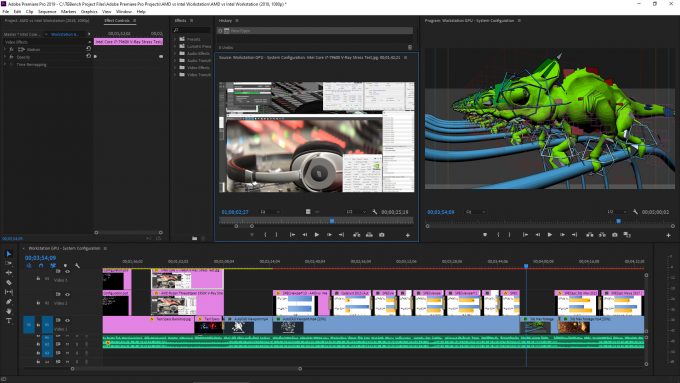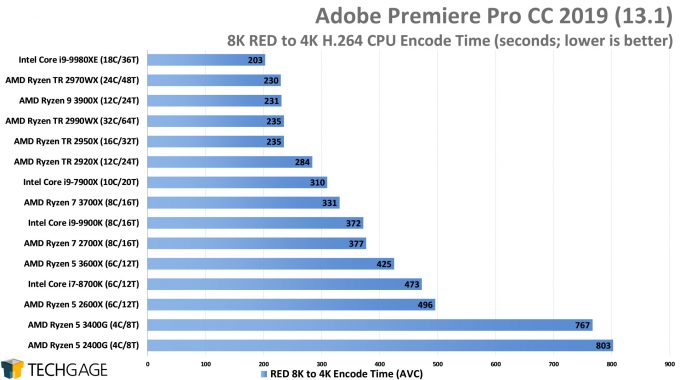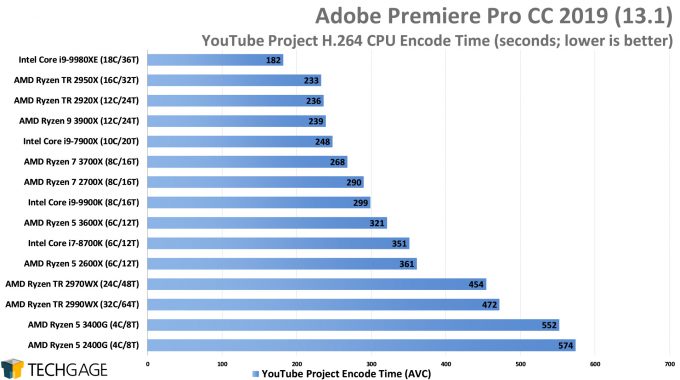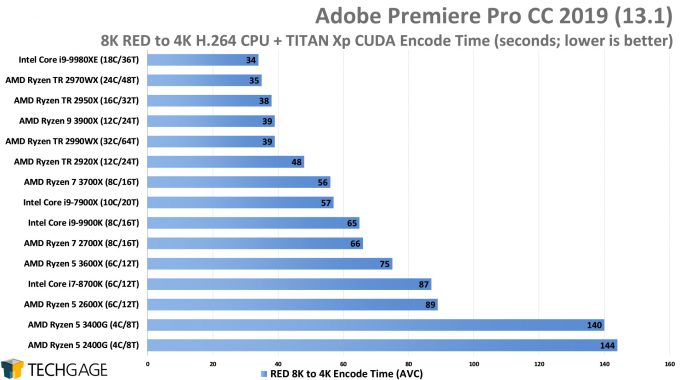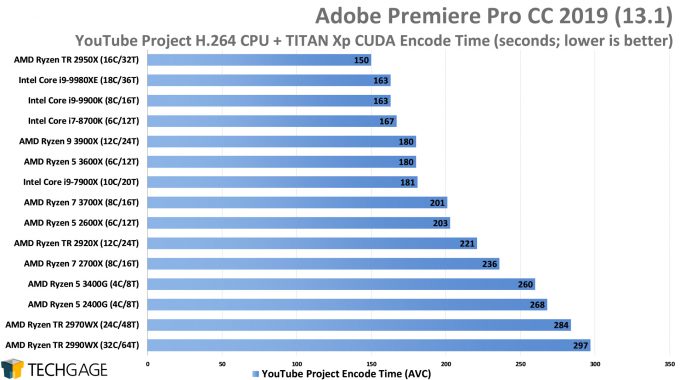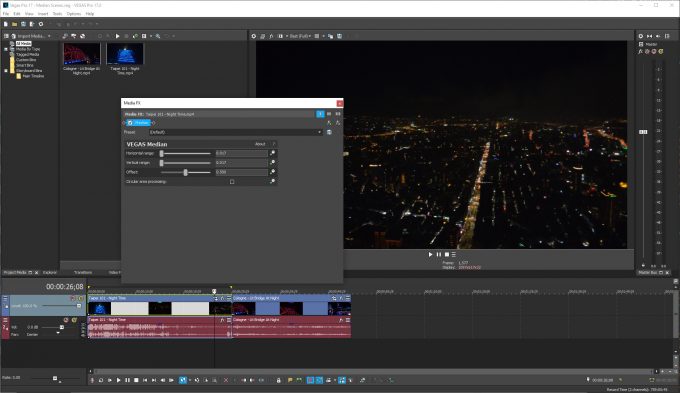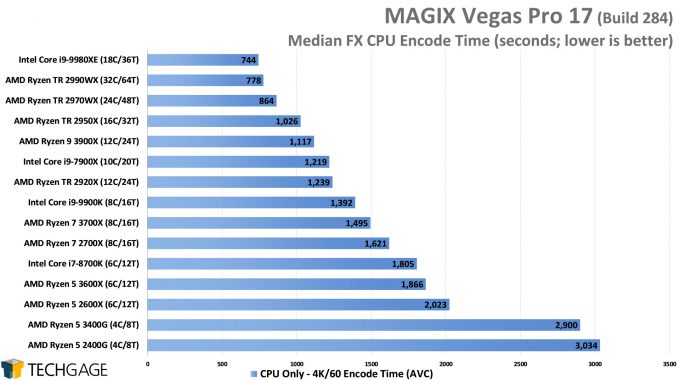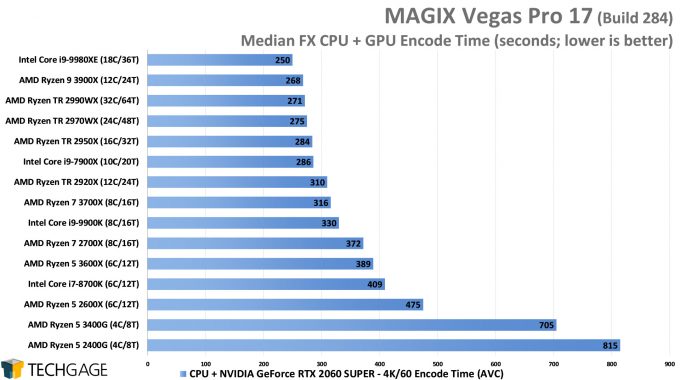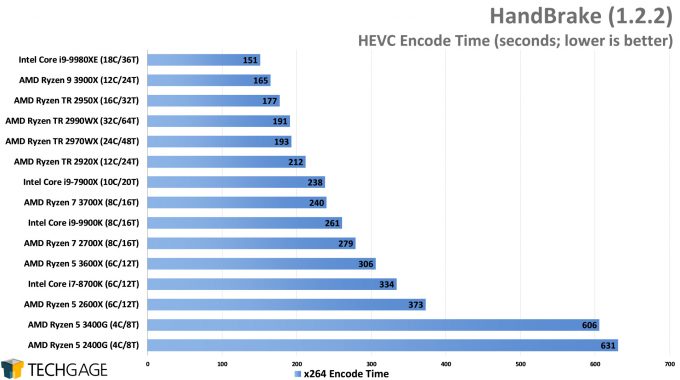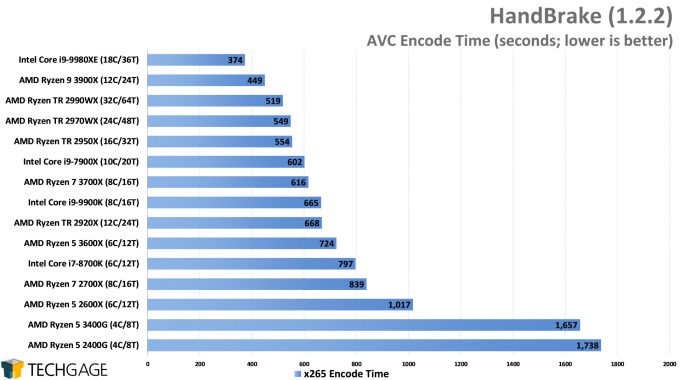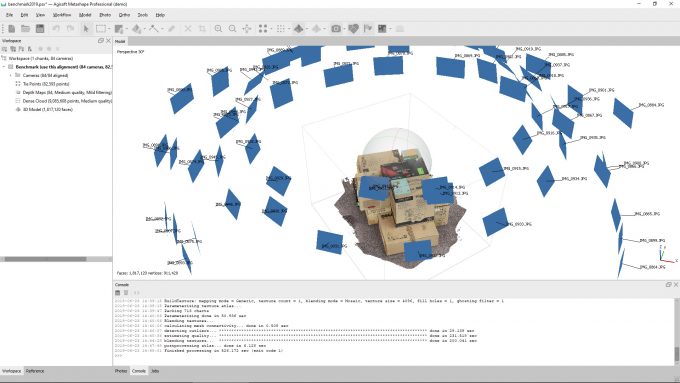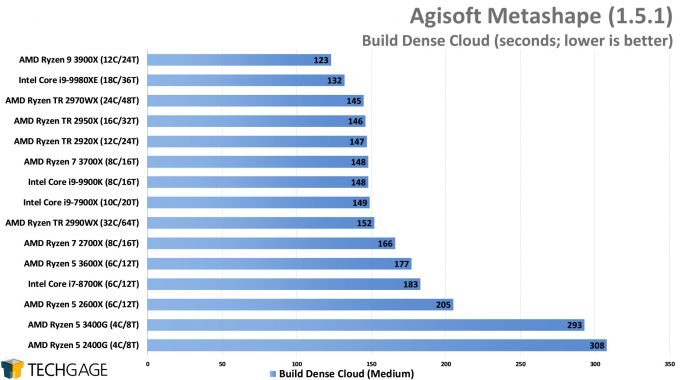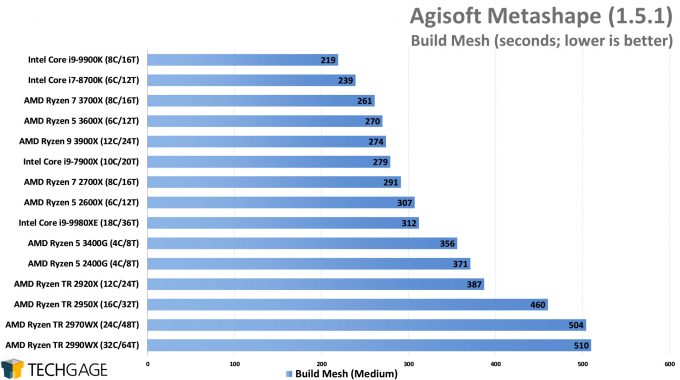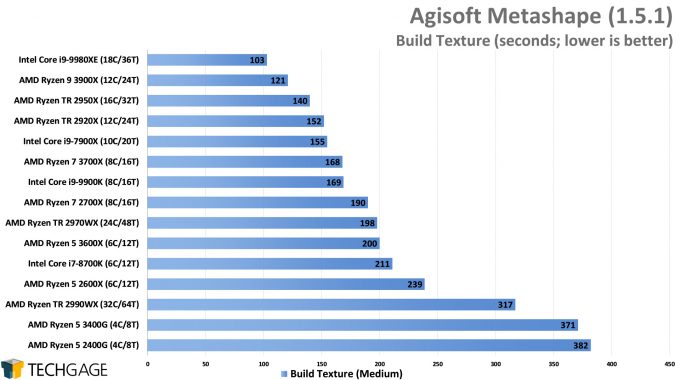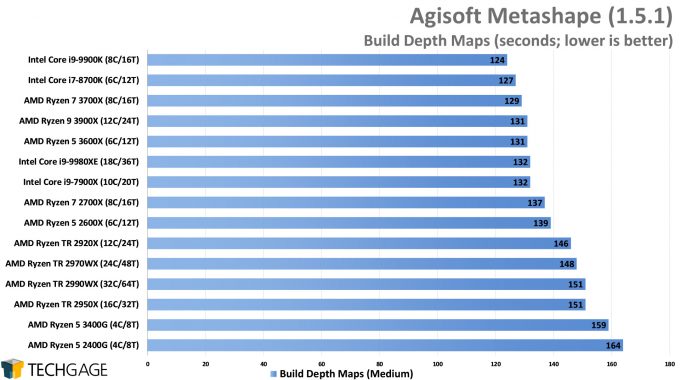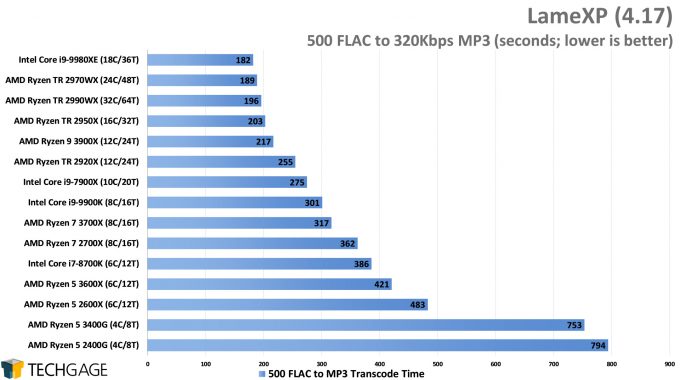- Qualcomm Launches Snapdragon 4 Gen 2 Mobile Platform
- AMD Launches Ryzen PRO 7000 Series Mobile & Desktop Platform
- Intel Launches Sleek Single-Slot Arc Pro A60 Workstation Graphics Card
- NVIDIA Announces Latest Ada Lovelace Additions: GeForce RTX 4060 Ti & RTX 4060
- Maxon Redshift With AMD Radeon GPU Rendering Support Now Available
AMD Ryzen 5 3600X & Ryzen 5 3400G CPU Performance Review

Having taken a look at Linux performance with AMD’s Ryzen 5 6-core 3600X and 4-core 3400G last week, we’re now turning our attention to Windows. We’re tackling everything from encoding to rendering and math to gaming with the ultimate goal of finding out how these chips stack up, and see where the greatest strengths lay.
Page 3 – Encoding: Premiere Pro, Vegas, HandBrake, Agisoft Metashape & LameXP
We’re going to kick off this performance look with a handful of encode tests. Encoding is one of those scenarios that can be extremely hit-or-miss when it comes to taking good advantage of big CPUs. Sometimes, applications will give the impression that they’re making proper use of the CPU, but we’ve found more than once that some applications actually just use the entire CPU very poorly.
Fortunately, the situation is getting a lot better over time. As an example, for most of its life, Adobe’s Lightroom didn’t use more than a few cores and threads. Today, the application can use most of whatever CPU you can hand it, although we’re not sure it uses it entirely effectively. We’re actually planning on looking into that very soon.
The performance look on this page is going to tackle Adobe’s ever-popular Premiere Pro, MAGIX’s Vegas Pro, and HandBrake. That trio takes care of video encoding, while Agisoft’s Metashape will help with a photogrammetry scenario. Finally, we’ll wrap up with audio encoding, and before we catch FLAC for dilly-dallying, let’s get into the first results:
Adobe Premiere Pro CC
These first two results are enough to highlight the generational advantages each of these new chips have – or don’t have. The 3400G is based on the last-gen Zen, so its strengths over its predecessor are modest. As for the 3600X, it follows in the footsteps of the other 3000-series chips and reflects a huge leap in performance from one generation to the next.
Zen 2 exhibits many gains over the previous generation, but we’re guessing the near doubling of cache on the 3000-series chips plays a big role in the performance pick-ups here, but that’s certainly not everything. It does make us hope that Intel stuffs its next-gen CPUs with more cache, though. The last-gen Zen chips didn’t fare nearly as well against the Intel competition, but it’s caught up quite a bit here, with AMD’s newest 6-core managing to beat out Intel’s last-gen 6-core i7-8700K.
As for the G chips, it’s clear that they are not built for such heavy workloads, but that’s not to say they’re not capable of it. You’re just going to be waiting a while. If the reason for your slowdown is mostly related to video effects, then adding a GPU might help things. Such as a TITAN Xp:
The slowest chip in the 8K non-CUDA test hit 800 seconds (2400G), a number that was whittled down to 144 when a fast GPU was added into the mix. Such dramatic gains were not seen in the more complicated YouTube Project test, but that just means the performance deltas between each model are even smaller.
Ultimately, you do not want to skimp on your CPU for encoding stuffs. Even moving from the 4- to 6-core parts result in massive gains in performance. Overall, 8-core parts look to offer good bang-for-the-buck, but the 3600X’s generational gains paints it as a good value for $249.
MAGIX Vegas
We’ve never manged to find another FX filter in Vegas Pro that punishes hardware as much as Median, an effective denoiser that aggressively uses your hardware regardless of your settings. The clip we’re testing with is a mere 50 seconds long, but Median is grueling enough to require an entire minute to process each second on the lower-end G chips, with major gains immediately being seen with the simple bump up to a 6-core model.
Intel’s 6-core 8700K beats out AMD’s 3600X in the CPU-only encode, but once the GPU was introduced, those placements were swapped, so both CPUs are on a level playing field here. As for the G chips, it’s important to note that straight encodes will not take nearly as long to complete, and this is by all assurances a “worst-case scenario” test.
For more in-depth Vegas Pro 17 testing, you can check out our recently posted article.
HandBrake
This is the third encode test in a row that shows major differences between the 4- and 6-core parts. While the 6-core 3600X doesn’t include an APU, its performance leap over the 3400G could be considered extreme. But, video isn’t the only thing people do on their PCs, and if you do very little, the slower parts might not matter too much.
HandBrake is another test that lets Zen 2 strut its stuff. The 3600X places ahead of the 8700K in both the AVC and HEVC tests, although if we had a more comparable 9700K in there, we’re guessing both SKUs would be a lot closer (but it’s still hard to say if AMD would be overtaken).
Agisoft Metashape
Metashape, the artist formally known as PhotoScan, is a popular photogrammetry tool that makes life for its users a lot easier when there’s some powerful hardware waiting to be exploited. This is one of the more complex tests we run, because not all of its actions apply to one process or another.
The entire test consists of four steps, with the first being Align Photos. The GPU is used in this step for the Match Photos portion, while the CPU handles Align Cameras. This process shows no real scaling, so it’s ignored in the results. The next step is Build Dense Cloud, which uses the CPU and GPU heterogeneously for its Depth Maps Generation Time step, and only the CPU for Dense Cloud Generation Time. The final steps are Build Mesh and Build Texture, both of which use the CPU exclusively.
Metashape is an interesting piece of software to benchmark, because we’re not just measuring a single process, but a number of them. All of these processes use the CPU and GPU differently, so scaling can vary quite a bit from one chart to the next. It appears based on our performance here, it’s the Build Texture part of the process that uses the CPU most efficiently.
What confuses things is that 8-core parts can dominate the Build Mesh and Build Depth Maps graphs, so it’s clear that there’s no such thing as a one-size fits all here. Photogrammetry can often introduce many single-threaded operations, which could help drag out the overall time.
Metashape is a test we’re going to iterate on over time, and we may ultimately move from a product capture to an aerial one, and see if our scaling improves at all. Similarly, we’re also planning to add other photogrammetry tools in the future, with RealityCapture next on the agenda.
LameXP
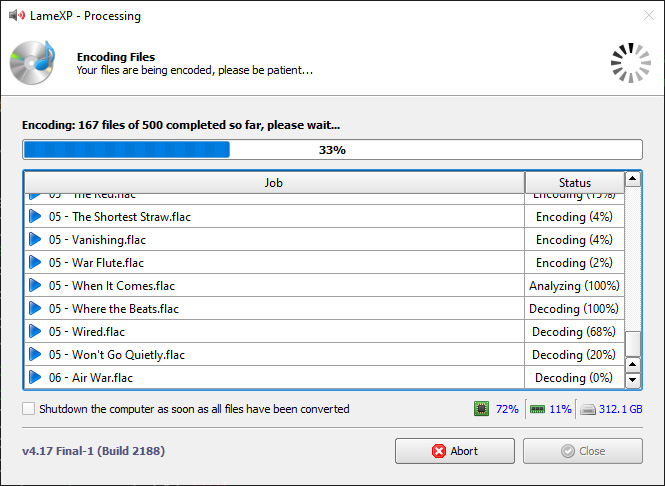
Music conversion gives us largely expected scaling, although the top-end would be shaken up a bit if LameXP would take advantage of more than 32 threads. We’re still seeing clear gains gen-over-gen with the 3600X, while the 3400G itself inherits a clear boost over the last-gen 2400G. Chances are good that you’re not someone who encodes music all day, but it is really satisfying when you need to do it and have a lot of cores waiting for action.
Support our efforts! With ad revenue at an all-time low for written websites, we're relying more than ever on reader support to help us continue putting so much effort into this type of content. You can support us by becoming a Patron, or by using our Amazon shopping affiliate links listed through our articles. Thanks for your support!




